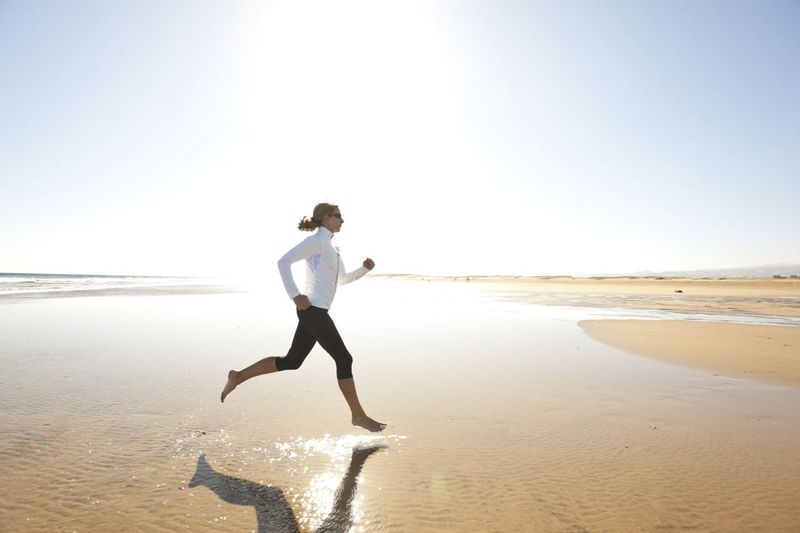Why You Should Add HIIT to Your Summer Fitness Regime

What's so good about HIIT Training?
- It's ideal if you don't want to spend a lot of time exercising - you gain the same benefits from 30 minutes of exercise as you would for 2 hours doing something less intense.
- You can do it anywhere.
- It has a high fat-burning and muscle-building potential when performed regularly in conjunction with a balanced diet. It increases your metabolic rate long after you stop working out so you continue to burn calories. As such you will notice quick results both in terms of fitness and your body composition.
- HIIT significantly increases the flow of endorphins in the brain, boosting your mood and improving your overall mental health.
- HIIT-style training recruits fast-twitch muscle fibres which help build power, speed, and reaction time – useful for other sports and in everyday life.
- Your body will become well equipped to perform for longer stretches of time, ideal if you want to take part in endurance events.
- It rapidly improves your cardiovascular health, decreases blood pressure, lowers bad cholesterol, and improves insulin sensitivity, which can help reverse type 2 diabetes.
- HIIT is very beneficial for older adults – aside from the aforementioned health-related benefits, it promotes new muscle growth, offsetting age-related muscle loss.

The Different Kinds of HIIT Training
There are many different types of HIIT to choose from and it's important to customise your routines to what your body is capable of and to what you enjoy.
For example, if you enjoy running, you could sprint intensely for a minute and then walk for 30 seconds before breaking into a sprint again; repeat this until you've completed 15-20 minutes. Alternatively, you could plan a circuit based around bodyweight exercises, using 4-5 moves such as push-ups, squats, burpees, skater hops and tricep dips – whatever suits your fitness levels and capabilities. You could perform each move for 20-30 seconds (or longer depending on the intensity) then take a 10-20 second break between each move (or gently jog on the spot) and then repeat the circuit 3-4 times. You could also incorporate equipment such as kettlebells and dumbbells into your routines if you have them.
As you get fitter, you can progress to more advanced moves, increase the time of your active phases and decrease your recovery periods. If you're still unsure, there is plenty of information available online along with good examples of HIIT routines. You could also take things further by planning a bootcamp holiday where you’ll have access to experienced trainers with both private and group HIIT sessions that will enable you to finesse your form.

How Often Should I do HIIT?
For all the benefits of including HIIT in your fitness regime, it's also important to be aware that two to three sessions per week is sufficient. If your aim is to work out four times a week, two HIIT sessions plus two resistance training or lighter endurance sessions would be a good balance, with the other days as rest days. If you go too hard on the HIIT you risk sabotaging your fitness goals; it's so important to incorporate rest days so that your muscles can repair and strengthen, plus to enable your lactate threshold to increase (the maximum intensity you can train at before lactic acid kicks in). Gentle, low intensity movement such as walking or swimming is really beneficial on your rest days to alleviate DOMS and help you stay active. As with any exercise, eat a balanced diet to fuel the intensity of your workouts and make sure you stay well hydrated.
HIIT is a great addition to your workout regime and the summer months are the perfect time to get started. It's a concept that can be applied to almost any form of exercise and there's no excuse when you're short on time. You can target different muscle groups within your routine for a great full-body workout. If using weights, make sure they're going to be sustainable for the duration of your workout to maintain proper form throughout. Once you've gained the confidence, mix it up each session to challenge your body and keep it interesting - think new moves or hill sprints. You won't look back!
Talk to one of our Wellness Travel Specialists on 0203 397 8891 or contact us here to discuss tailor-making your perfect fitness holiday.
About Eleanor
|
Eleanor is a Level 3-qualified personal trainer who works with clients of all ages and levels of fitness. Her tailored programmes incorporate a mixture of low/high intensity interval training plus resistance work and she is qualified to advise on nutrition to compliment this. She is also a single mum to a 5-year-old boy so recognises the challenges of balancing a busy schedule with a healthy lifestyle. Visit Eleanor’s website here Follow Eleanor on Instagram here |
